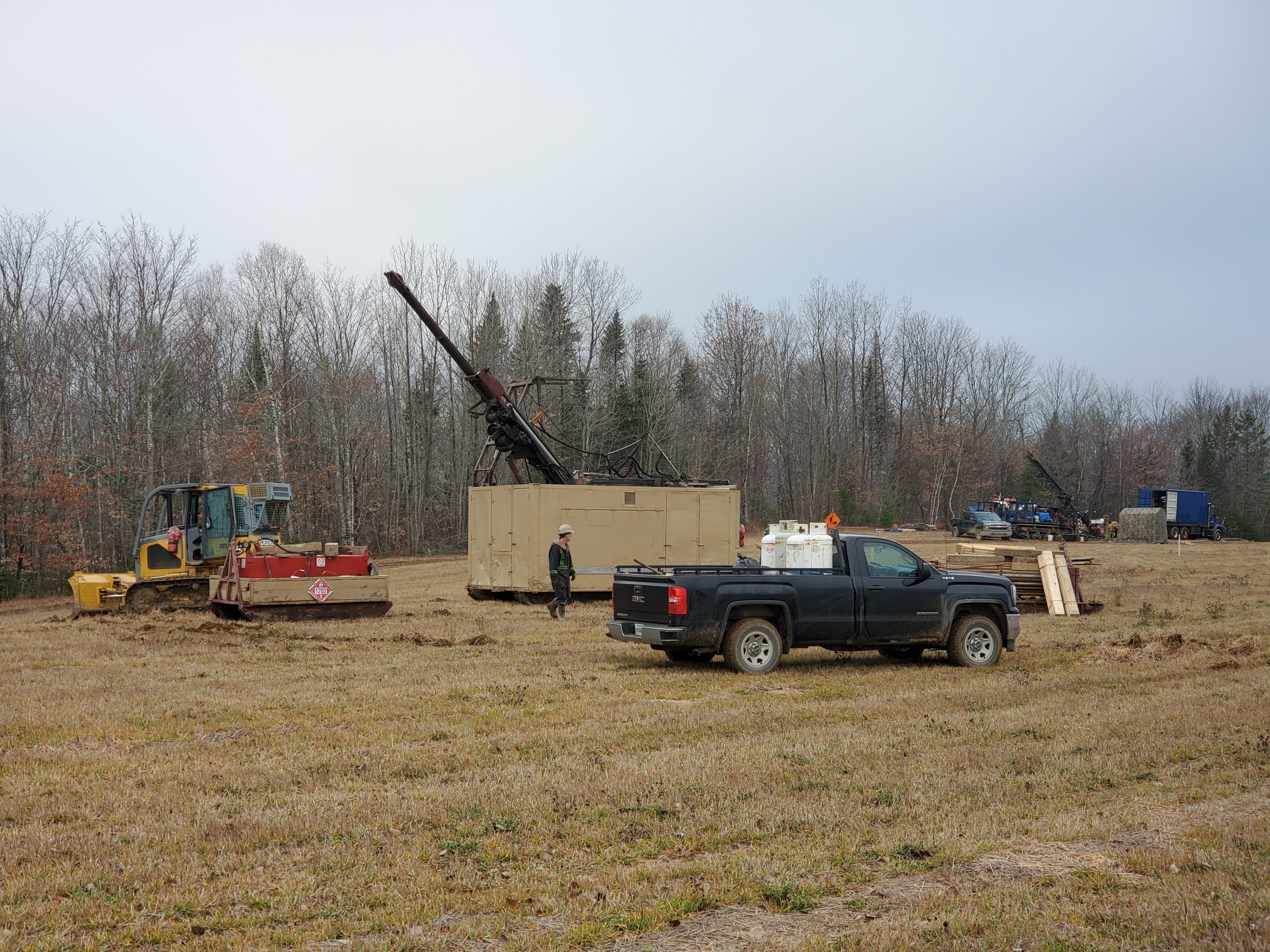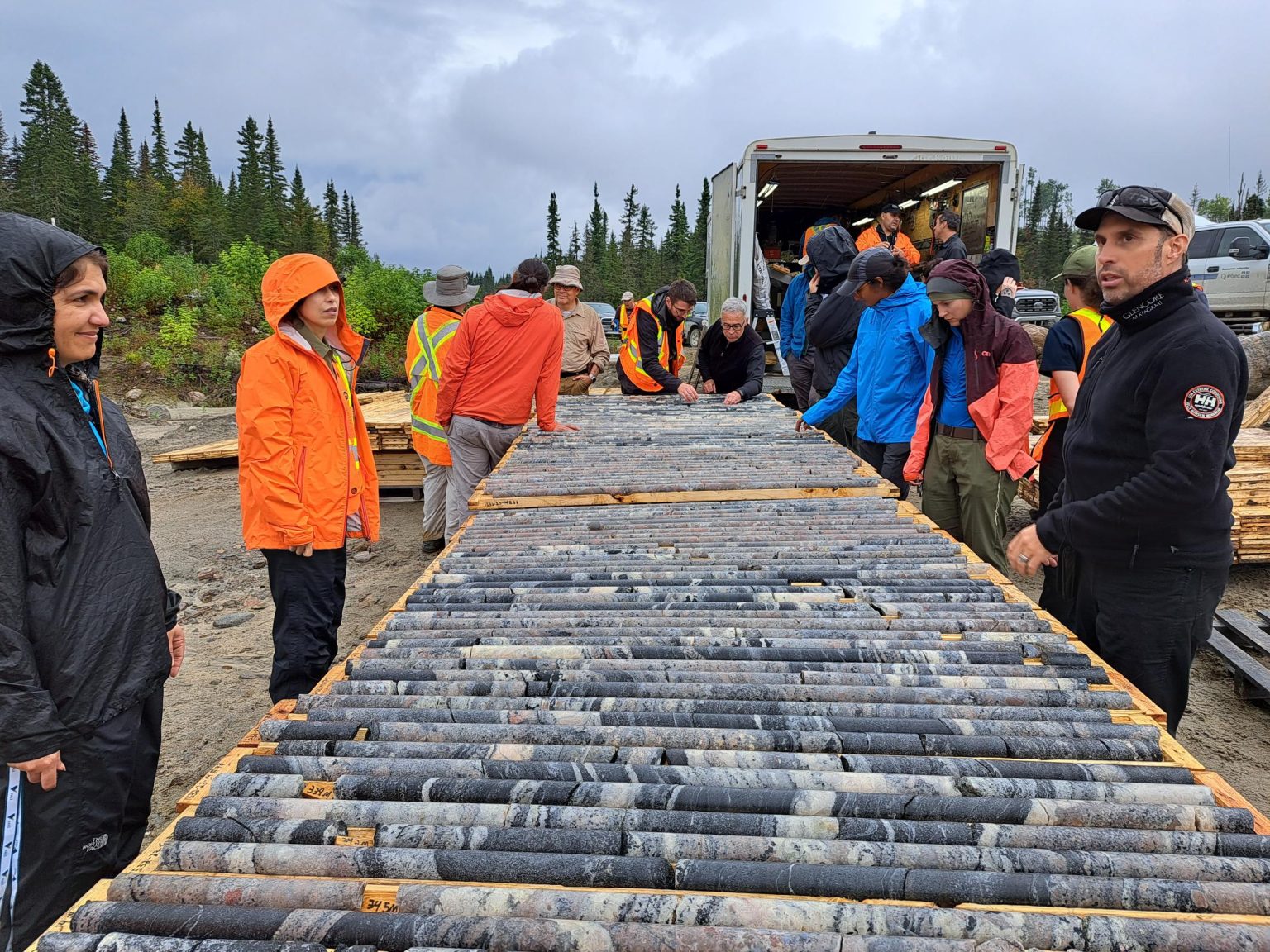Plan Nord bears fruit

Nemaska’s Whabouchi lithium mine. CREDIT NEMASKA LITHIUM
In December 2014, financially strapped Cliffs Natural Resources announced the closure of its Bloom Lake iron mine – putting some 600 miners out of work and casting a dark cloud over the nearby town of Fermont, Que, located near the Quebec-Labrador border some 400 km north of Sept-Iles.
But one year later, the town’s fortunes took a turn for the better.
Quebec Iron Ore (QIO), a subsidiary of Montreal-based Champion Iron, bought the mine, a railway spur line and dozens of mineral claims for the rock bottom price of $10.5 million.

Champion Iron’s Bloom Lake iron ore mine.
By February of this year, QIO put Bloom Lake back into production – and 450 miners back to work – thanks in no small part to direct and indirect support from the Quebec government under its Plan Nord initiative.
The Quebec government made a direct investment of $50 million in Bloom Lake – giving it a 37.2% stake in a joint venture partnership with Champion. As well, the Caisse de dépôt loaned the company $100 million to get the mine and mill up and running. Then the government acquired Cliffs’ Pointe Noire port facility and infrastructure in the municipality of Sept-Îles and QIO became a limited partner in the corporation set up to manage and develop the port.
“We have a great partnership with the Quebec government,” says Michael O’Keefe, president and CEO of Champion. “I’ve worked closely with the people at Plan Nord.”
Bold beginnings
In May 2011, former premier Jean Charest launched Plan Nord – a bold initiative meant to stimulate resource development, among other things, north of the 49th parallel from Rouyn- Noranda to Baie Comeau. The plan languished after Charest’s Liberal party lost the 2012 election, but Charest’s successor Philippe Couillard revived it when the Liberals returned to power in 2014.
The Couillard government created a new agency called Société Plan Nord (SPN) with a mandate to promote the development of natural resources, to diversify the mining industry and to support private sector projects through direct and indirect investments. To that end, the government established Fonds d’initiatives du Plan Nord and projected that it would invest over $350 million between 2015 and 2020 while contributions from other government departments and agencies would bring the total investment to $1.3 billion.
“It confirmed that the government was committed to development in northern Quebec,” says Guy Bourassa, president and CEO of Quebec City-based Nemaska Lithium, which is developing a lithium mine near the Cree community of Nemascau, some 300 km north of Chibougamou. “It has had a big impact on us.”
In May, the company completed a $1.1-billion financing that included a US$350-million bond offering, a US$150-million streaming agreement and a $454-million share issue. Ressources Québec, a provincial agency, bought $80 million worth of shares, giving it a 12.5% stake, and other government entities have contributed an additional $50 million.
“That really helped the rest of the world to put money into the project,” says Bourassa. Indeed, SoftBank Group of Japan invested $94 million for a 9.9% stake and the right to nominate one member of the board – the first time the Japanese investment giant has put money into a mining venture.
Nemaska is developing an open pit mine with a projected life of 33 years and expects to begin production in the second half of 2019. The company plans to mine to a depth of 190 metres over a period of 20 years before going underground. Initially it will employ 200 people, many of them Cree.
At the outset, the company will be producing a lithium concentrate known as spudomene. Nemaska is currently building a processing plant in Shawinigan that will refine the spudomene into high purity lithium hydroxide and carbonate through a proprietary process, which it has patented. The plant is expected to be complete by the end of 2020 and will employ about 100 people.
Lithium is a key component of batteries in cell phones, tablets and other consumer electronics and is also used in batteries for electric vehicles. Some analysts warn that the world market is becoming saturated. However, Nemaska has signed supply agreements that commit 90% of future production to two companies LG Chem Ltd., South Korea’s largest chemical company, and Northvolt, a Swedish consortium founded in 2016 to develop the world’s cleanest battery technology.
First vanadium producer
Société Plan Nord and other branches of the Quebec government have played an integral role in advancing BlackRock Metals’s vanadium, titanium, magnetite mining project. The privately owned, Montreal-based company has been exploring and developing its property near the community of Chibougamou since 2008.
The company has raised a total of $1.2 billion and that includes $85 million in equity from Quebec’s Fonds Capital Mines Hydrocarbures, as well as a $50-million loan from Investissement Québec and a second $50-million loan from Ressources Québec.
“If you look at this project from the government’s perspective, it diversifies the province’s mineral production, which is one of the goals of Plan Nord,” says BlackRock chairman Sean Cleary. “And we’ll be hiring a lot of people.”
The mine and concentrator will create 200 jobs while a processing plant will employ another 300 people. Cleary says BlackRock will begin preliminary construction of the open pit mine this fall with full construction slated to begin March 2019. Production will commence in 2021.
The company is planning to build its metallurgical plant at Grande Anse, a federally owned port on the Saguenay River, south of the city of Chicoutimi, with an adjacent industrial park developed by the Quebec government at a cost of some $63 million.
Cleary anticipates that the company will find multiple buyers for the output from its mine. For one thing, BlackRock’s mine will be the first vanadium producer in North America. Five countries – Russia, Ukraine, South Africa, Brazil and China – account for most of the world’s production and China consumes all its output internally.
Vanadium is a key component of large batteries used to store electricity generated by solar and wind energy installations. It is also an alloy used to make stronger lighter steel and as Cleary notes: “As the world moves toward electric vehicles we will need stronger, lighter materials.”
The company will also be producing high purity magnetite iron, which is used in recycling steel. “It allows producers to use a higher percentage of scrap steel,” says Cleary. “That’s very positive for the environment. Our project has been well received downstream by users of the product.”





Comments